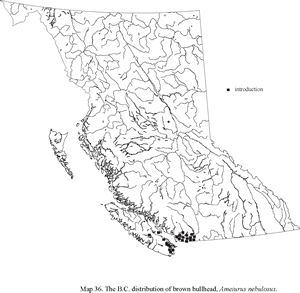Occurs in pools and sluggish runs over soft substrates in creeks and small to large rivers. Also found in impoundments, lakes, and ponds. Rarely enters brackish waters (Ref. 1998). A nocturnal feeder that feeds mollusks, insects, leeches, crayfish and plankton, worms, algae, plant material, fishes and has been reported to feed on eggs of least cisco, herring and lake trout (Ref. 1998). Juveniles (3-6 cm) feed mostly on chironomid larvae, cladocerans, ostracods, amphipods, bugs and mayflies (Ref. 1998). Can tolerate high carbon dioxide and low oxygen concentrations and temperatures up to 31.6 °C although experiments show upper lethal temp. to be 37.5 °C; resistant to domestic and industrial pollution (Ref. 1998). Has been observed to bury itself in mud to escape adverse environmental conditions (Ref. 1998).
Source:
FishBase. Page, L.M. and B.M. Burr 1991 A field guide to freshwater fishes of North America north of Mexico. Houghton Mifflin Company, Boston. 432 p.
